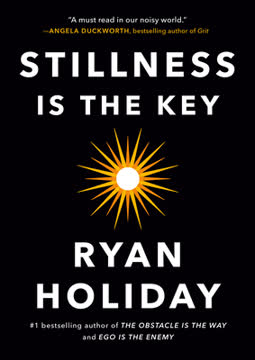Key Takeaways
1. Zen and Psychology: A Powerful Combination for Modern Practice
"Even though this is not a book about psychotherapy, clearly I am advocating for a practice that includes psychological awareness."
Modern complexity demands new tools. The world today is infinitely more complex and neurotic than the world of Shakyamuni Buddha. While meditation remains the central practice of Zen, combining it with modern psychological understanding can help practitioners navigate the challenges of contemporary life. This approach helps prevent spiritual bypassing, where individuals use spiritual ideas to avoid dealing with emotional or psychological issues.
The I-System complements Zen practice. The I-System, a psychological model created by Stanley H. Block, provides a concrete and tangible way to explore the mind. It helps practitioners:
- Uncover self-imposed limitations
- Recognize patterns of thought and behavior
- Bridge the gap between intellectual understanding and lived experience
By combining Zen philosophy with psychological tools like the I-System, practitioners can more effectively address the root causes of suffering and cultivate a deeper, more integrated practice.
2. The Skandhas: Understanding the Illusion of Self
"The skandhas are a process and specifically a process of avoidance."
Deconstructing the self. The five skandhas (form, sensation, perception, mental formations, and consciousness) describe how we create and maintain a sense of self. This process is not a stable, fixed entity but a constantly changing flow of experiences and reactions.
Recognizing impermanence. Understanding the skandhas helps practitioners:
- See through the illusion of a permanent, separate self
- Recognize how we cling to certain identities and roles
- Let go of the need to defend or prove our existence
By examining the skandhas through mind mapping and meditation, we can begin to loosen our grip on the idea of a fixed self and open up to the reality of impermanence and interconnectedness.
3. Omnipresent Factors: How We React to the External World
"Just like the omnipresent factors, the I-System also focuses on the way humans continually and unconsciously seek happiness and completion from sources outside of the self."
Understanding our reactions. The five omnipresent factors (invested contact, attractive or aversive reaction, entrancement, self-motivated intentionality, and invested attention) describe how we interact with the world and create suffering through our attachments and aversions.
Breaking the cycle. By recognizing these factors, practitioners can:
- Identify patterns of reaction and attachment
- See how we invest meaning in external things and experiences
- Begin to let go of the belief that happiness depends on external conditions
Mind mapping exercises focused on the omnipresent factors help reveal our unconscious patterns and provide a starting point for changing our relationship with the external world.
4. Dependent Origination: The Chain of Suffering
"Dependent origination is a core teaching of the Buddha; in fact, some accounts hold that it was the realization of dependent origination as the fundamental truth of the universe that led to Shakyamuni's awakening."
The cycle of suffering. The twelve links of dependent origination describe how ignorance leads to suffering through a chain of cause and effect. This process explains how we create and reinforce our sense of self and our view of the world.
Breaking the chain. Understanding dependent origination helps practitioners:
- Recognize how their actions and thoughts contribute to suffering
- See the interconnectedness of all phenomena
- Find points where they can interrupt the cycle of suffering
By using mind maps to explore our personal stories and beliefs, we can begin to see how we create our own suffering and take steps to break free from these patterns.
5. The Six Realms: Psychological States We Inhabit
"The realms are fluid states, and we inhabit each one repeatedly over the course of our life, or even over the course of a day!"
Recognizing emotional patterns. The six realms (god, demigod, human, animal, hungry ghost, and hell) represent different psychological states that we move through in our daily lives. Each realm is characterized by specific emotions and thought patterns.
Navigating the realms. Understanding the realms helps practitioners:
- Identify their "home realm" or default emotional state
- Recognize when they're caught in unhelpful patterns
- Develop compassion for themselves and others
Mind mapping exercises for each realm allow practitioners to explore their emotional landscape and recognize the impermanence of these states, leading to greater equanimity and freedom.
6. Mind Mapping: A Tool for Self-Discovery and Practice
"A mind map takes what is often subconscious or implicit in our thinking and puts it down on paper, so the beliefs can be examined."
Externalizing internal processes. Mind mapping is a powerful tool for bringing unconscious thoughts and beliefs into awareness. It provides a concrete way to explore abstract concepts from Buddhist psychology and personal experiences.
Benefits of mind mapping:
- Uncovers hidden beliefs and patterns
- Provides a visual representation of thought processes
- Allows for objective examination of subjective experiences
By regularly engaging in mind mapping exercises, practitioners can gain insights into their thought patterns, emotional reactions, and attachments, creating a foundation for deeper practice and personal growth.
7. Bridging: Connecting Mind Maps to Meditation
"Bridging is what takes us out of the cycle of the Identity-System and helps us come to our senses."
From thought to presence. Bridging is a technique that helps practitioners move from the analytical mind to a state of present-moment awareness. It serves as a transition between mind mapping and meditation.
The bridging process:
- Focus on physical sensations or background sounds
- Repeat the mind mapping exercise while maintaining this focus
- Notice the reduction in body tension and mental clutter
Bridging helps practitioners experience the difference between being caught in thoughts and being present in the moment. This experience can then be carried into formal meditation practice.
8. The Sutras: Ancient Wisdom for Contemporary Life
"I believe that studying the original texts is second only to consistent zazen as a way to create the conditions for awakening."
Timeless teachings. The Buddhist sutras contain profound wisdom that remains relevant to contemporary life. While they can be challenging to approach, their study offers deep insights into the nature of reality and the human condition.
Key sutras and their teachings:
- Diamond Sutra: Non-attachment and the emptiness of all phenomena
- Lotus Sutra: Universal buddha-nature and skillful means
- Vimalakirti Sutra: Non-duality and the integration of practice into daily life
- Platform Sutra: Direct experience of true nature
By combining sutra study with mind mapping and meditation, practitioners can bridge the gap between ancient wisdom and modern life, finding new ways to apply these teachings to their personal experiences.
9. Zazen: The Core of Zen Practice
"Zazen, practiced regularly, leads to dropping off body and mind and thus dropping the notion that we have a stable, unchanging self that needs protecting."
Beyond thinking. Zazen, or seated meditation, is the heart of Zen practice. It provides the opportunity to directly experience the nature of reality beyond concepts and ideas.
The power of zazen:
- Cultivates present-moment awareness
- Allows for the dropping of body and mind
- Leads to the realization of non-self and emptiness
While mind mapping and psychological tools are valuable, they ultimately serve to support and deepen zazen practice. Regular, committed zazen is essential for true transformation and awakening.
10. Non-Attachment: The Path to Freedom
"Nothing is to be clung to, not even the dharma."
Radical letting go. Non-attachment is a central teaching in Buddhism, particularly emphasized in Zen. It involves releasing our grip on all concepts, beliefs, and identities, even those we consider positive or spiritual.
The practice of non-attachment:
- Recognizes the impermanence of all phenomena
- Cultivates openness and flexibility
- Leads to true freedom and peace
Non-attachment can be challenging and even frightening, as it threatens our sense of self and security. However, by gradually letting go through mind mapping, bridging, and zazen, practitioners can experience the profound freedom that comes from releasing all attachments.
</assistant>
Last updated:
Review Summary
Zen beyond Mindfulness receives positive reviews, with readers praising its clear guidance on Buddhist practices and Mind-Body Bridging techniques. Many find the book's approach accessible and practical, appreciating its focus on self-awareness and ethical foundations. Reviewers highlight the book's ability to demystify meditation concepts and provide actionable practices for daily life. Some readers note its effectiveness in integrating Buddhist principles with modern psychology, making it valuable for both experienced practitioners and newcomers to mindfulness and Zen teachings.
Similar Books
Download PDF
Download EPUB
.epub digital book format is ideal for reading ebooks on phones, tablets, and e-readers.







